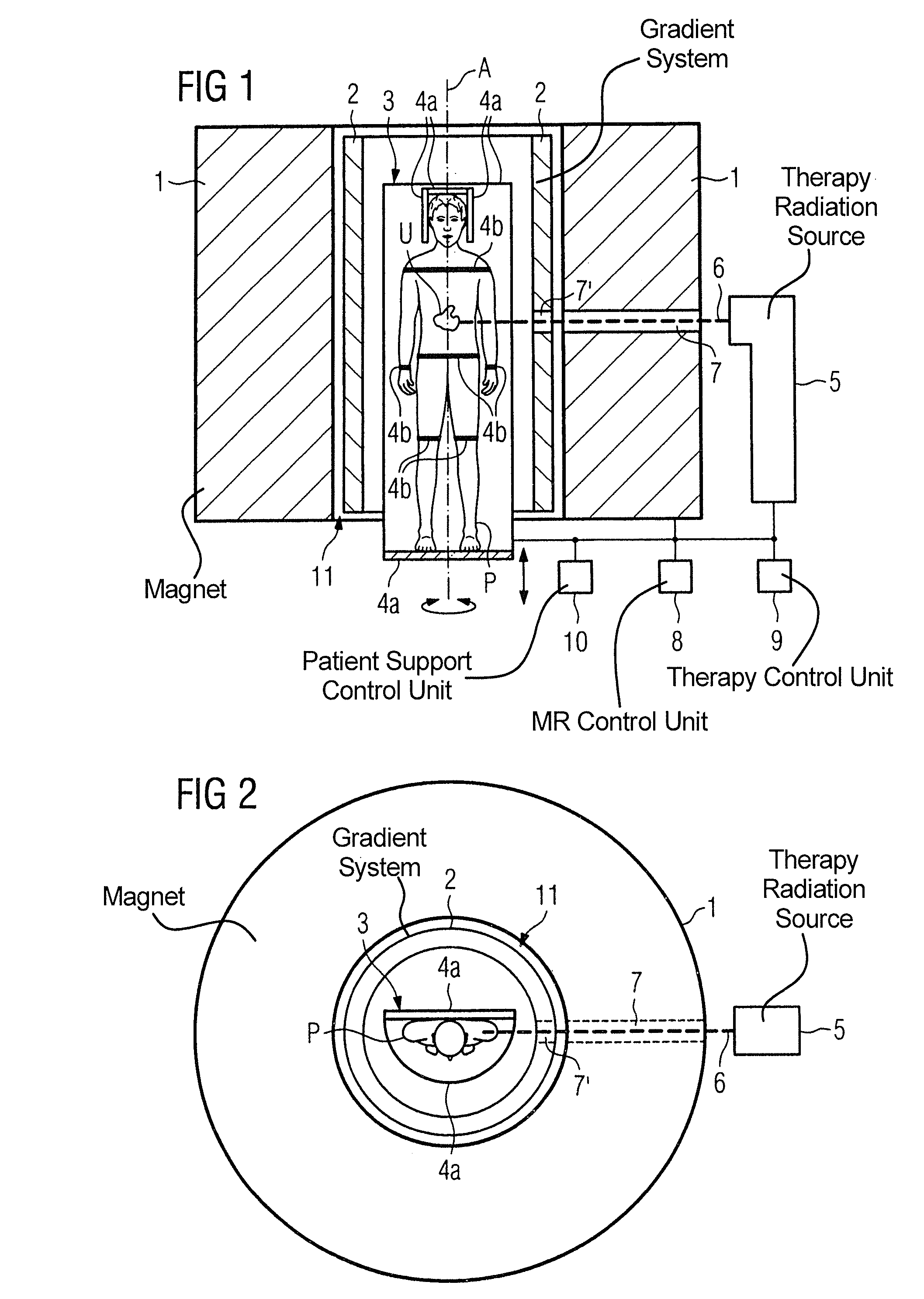Device for radiation therapy under image monitoring
a radiation therapy and image monitoring technology, applied in the field of radiation therapy implemented with image monitoring, can solve the problems of unsatisfactory soft tissue image quality of x-ray-based imaging techniques, tumors can also shift, grow or already shrink, etc., and achieve the effect of reducing the volume required, reducing the complexity, and being easy to realiz
- Summary
- Abstract
- Description
- Claims
- Application Information
AI Technical Summary
Benefits of technology
Problems solved by technology
Method used
Image
Examples
first embodiment
[0021]FIGS. 1 and 2 show (in longitudinal section and in plan view, respectively) a schematic representation of the invention for radiation therapy under image monitoring that has a magnetic resonance device and an exposure device. Image data of an examination subject U are generated with the magnetic resonance device, and in particular position and dimensions of the examination subject are monitored.
[0022]Only one magnet 1 and one gradient system 2 and, schematically, one control unit 8 of the magnetic resonance device are shown. Additional components of the magnetic resonance device such as radio-frequency antennas for radiation of excitation pulses and for acquisition of signals, display and image processing units and their cooperation are well known and therefore need not be shown nor described in detail herein.
[0023]The exposure device is also only schematically represented by a radiation source 5 and a control unit 9. A linear accelerator is advantageously used as an exposure ...
second embodiment
[0043]In this second embodiment, the therapy beam 6′ does not need to penetrate through the magnet 1′, rather only through the gradient system 2′. For this purpose, the gradient system 2′ has a radiation-permeable area 7″. The statements on the specification of FIGS. 1 and 2 is likewise referenced with regard to design possibilities of this radiation-permeable area 7″.
[0044]FIGS. 5 and 6 show (again in a longitudinal section or in plan view) a schematic representation of a third embodiment of a device for radiation therapy under image monitoring, which third embodiment comprises a magnetic resonance device and an exposure device. Image data of an examination object U are generated with the magnetic resonance device, and in particular position and dimensions of the examination subject are monitored.
[0045]Again, only one magnet 1″ and one control unit 8 are of the magnetic resonance device schematically shown. Additional components of the magnetic resonance device—for example a gradie...
PUM
 Login to View More
Login to View More Abstract
Description
Claims
Application Information
 Login to View More
Login to View More - R&D
- Intellectual Property
- Life Sciences
- Materials
- Tech Scout
- Unparalleled Data Quality
- Higher Quality Content
- 60% Fewer Hallucinations
Browse by: Latest US Patents, China's latest patents, Technical Efficacy Thesaurus, Application Domain, Technology Topic, Popular Technical Reports.
© 2025 PatSnap. All rights reserved.Legal|Privacy policy|Modern Slavery Act Transparency Statement|Sitemap|About US| Contact US: help@patsnap.com



